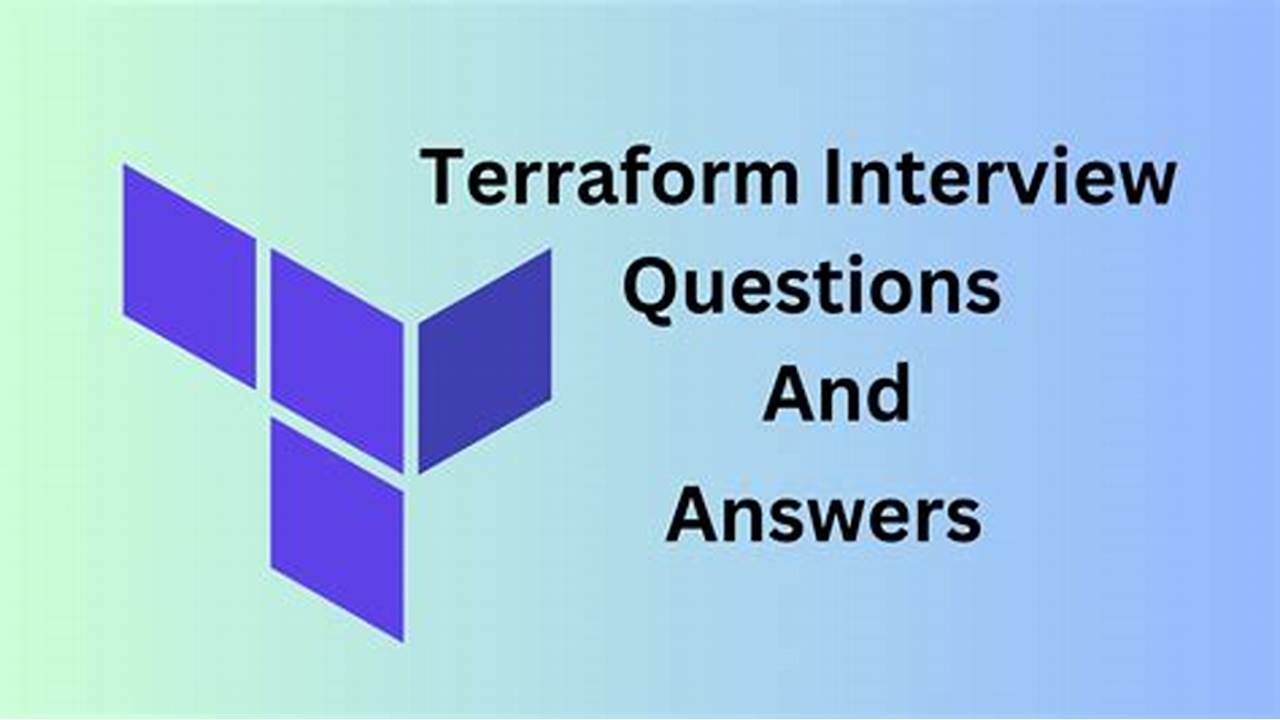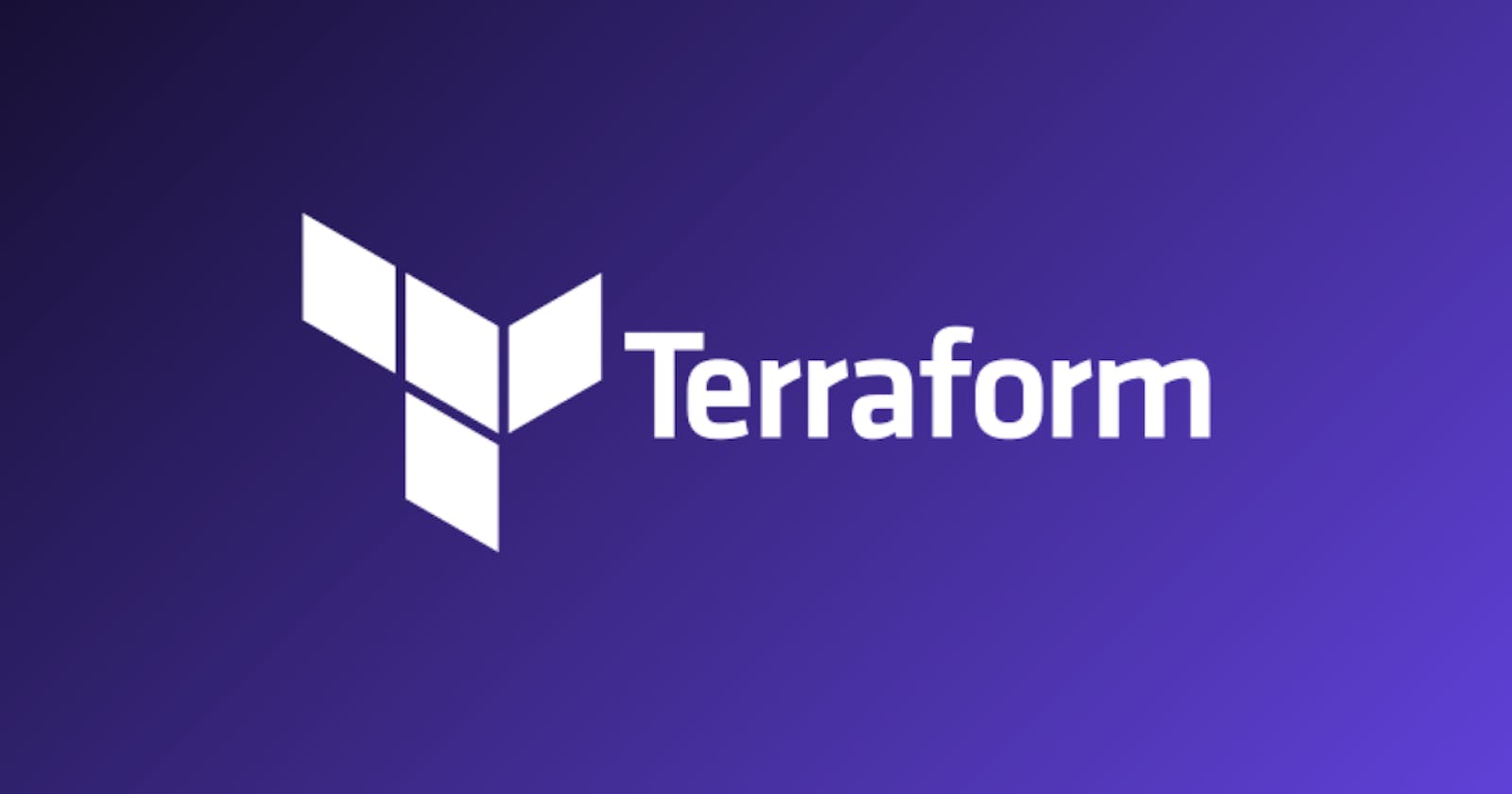Interview Questions in Terraform
 VENKATA SATHWIK REDDY DANDA
VENKATA SATHWIK REDDY DANDA
Terraform is an open-source tool developed by HashiCorp that allows you to define and manage infrastructure as code. It lets you build, change, and version cloud and on-premises resources using a high-level configuration language. This makes it easier to automate and manage infrastructure efficiently and consistently.

Basic Questions
Q1: What is Terraform?
A: Terraform is an open-source infrastructure as code (IaC) software tool created by HashiCorp. It allows users to define and provision data center infrastructure using a high-level configuration language known as HashiCorp Configuration Language (HCL), or optionally JSON.
Q2: What is Infrastructure as Code (IaC)?
A: Infrastructure as Code (IaC) is a method to manage and provision computing infrastructure through machine-readable configuration files, rather than physical hardware configuration or interactive configuration tools. It allows for automation, consistency, and version control of infrastructure.
Q3: What are Terraform Providers?
A: Providers are plugins that enable Terraform to interact with APIs of various services. They are responsible for understanding API interactions and exposing resources. Examples include AWS, Azure, Google Cloud, and many others.
Intermediate Questions
Q4: Explain the Terraform workflow.
A: The Terraform workflow consists of:
Write: Define infrastructure in configuration files.
Plan: Preview changes before applying them.
Apply: Execute the planned changes to reach the desired state.
Destroy: Remove all resources managed by the configuration.
Q5: How does Terraform handle state management?
A: Terraform uses a state file to keep track of the resources it manages. This state file is used to map real-world resources to your configuration, keep track of metadata, and improve performance for large infrastructures. It can be stored locally or remotely.
Q6: What is a Terraform module?
A: A module in Terraform is a container for multiple resources that are used together. Modules can be used to create reusable, configurable, and shareable components. They help in organizing and encapsulating code.
Q7: What is a Terraform Workspace and how is it used?
A: A Terraform Workspace allows you to manage different environments (e.g., Dev, Test, QA) within the same configuration. Each workspace has its own state file, which keeps the environments isolated from each other. Commands such as terraform workspace new <workspace_name>, terraform workspace select <workspace_name>, and terraform workspace list are used to manage workspaces.
Q8: What is Terragrunt and how does it relate to Terraform?
A: Terragrunt is a thin wrapper around Terraform that provides extra tools to reduce repetition and manage multiple Terraform modules effectively. It simplifies working with multiple environments and helps manage the remote state more efficiently.
Q9: What is the purpose of the null_resource in Terraform?
A: The null_resource allows you to execute arbitrary scripts or commands that are not directly associated with any specific infrastructure resource. It’s often used for tasks like running custom scripts or triggering external processes. A common use case is using a provisioner to execute a script when a specific resource changes, like printing “Hello World” whenever the ID of an EC2 instance changes.
Q10: What is the difference between .tf and .tfstate files?
A: The .tf files contain the desired state of your infrastructure, defined by Terraform configuration code. The .tfstate files contain the current state of your infrastructure, as tracked by Terraform. Terraform uses the state file to map real-world resources to your configuration, determine what changes need to be applied, and ensure that the infrastructure matches the desired state.
Advanced Questions
Q11: Why should .tfstate files be stored in a remote backend rather than locally?
A: Storing .tfstate files in a remote backend, such as an S3 bucket, ensures that multiple developers can collaborate effectively, reducing the risk of state file corruption and providing features like state locking and encryption. It also centralizes state management and helps prevent manual errors or inconsistencies.
Q12: How would you handle a situation where an EC2 instance was manually created, but now you want to manage it using Terraform?
A: I would use terraform import to bring the manually created resource into Terraform’s management. I would need to specify the instance ID and other attributes in the Terraform configuration files and link it to the Terraform state file using the import command.
Q13: What is the depends_on argument in Terraform, and when would you use it?
A: The depends_on argument explicitly defines dependencies between resources in Terraform. It ensures that a resource is created only after its dependencies are successfully created, or that it is destroyed before its dependencies during a destroy operation. This is useful when Terraform’s implicit dependency resolution is not sufficient.
Q14: Can you explain the purpose of the provisioner block in Terraform?
A: Provisioners in Terraform are used to execute scripts or commands on local or remote machines as part of resource creation or destruction. They are particularly useful for bootstrapping servers, running configuration management tools, or other tasks that need to be executed after the resource is created or before it is destroyed. Types of provisioners include local-exec, remote-exec, and file.
Q15: What are some common Terraform backends, and why are they used?
A: Common Terraform backends include Amazon S3, Azure Storage, Google Cloud Storage, and HashiCorp’s Terraform Cloud. These backends are used to store the Terraform state file remotely, which enables collaboration, state locking, and enhanced security features like encryption.
Q16: How can you manage different versions of a Terraform provider?
A: Terraform allows you to specify the required provider version using the version argument in the provider block. You can define a specific version or a version range to ensure compatibility with your Terraform configuration. For example:
provider "aws" { version = "~> 3.0" }
Q17: What is a Terraform Module, and why would you use one?
A: A Terraform Module is a reusable set of Terraform resources. Modules are used to encapsulate and reuse common infrastructure patterns, making your Terraform code more manageable and consistent across different environments or projects.
Q18: Explain how the count parameter works in Terraform.
A: The count parameter is used to create multiple instances of a resource. It allows you to scale resources by defining how many instances should be created. The count.index can be used to access the index of each instance, which is useful for naming or other configuration purposes.
Q19: How do you handle secrets and sensitive data in Terraform?
A: Secrets and sensitive data should not be hardcoded in Terraform files. Instead, they can be managed using environment variables, encrypted remote backends, or secret management tools like Vault. The .gitignore file should be configured to exclude sensitive files, such as terraform.tfstate, from version control.
Q20: What is the purpose of the terraform taint command?
A: The terraform taint command marks a resource as tainted, which forces Terraform to destroy and recreate that resource on the next terraform apply. This is useful when a resource is in an inconsistent or undesirable state and needs to be rebuilt.
Q21: How can you debug Terraform issues?
A: Terraform provides various debugging tools, such as setting the TF_LOG environment variable to different levels like TRACE, DEBUG, INFO, WARN, and ERROR. Logs can also be saved to a file using TF_LOG_PATH. Additionally, terraform plan and terraform apply commands can be used to understand what changes will be made.
Subscribe to my newsletter
Read articles from VENKATA SATHWIK REDDY DANDA directly inside your inbox. Subscribe to the newsletter, and don't miss out.
Written by

VENKATA SATHWIK REDDY DANDA
VENKATA SATHWIK REDDY DANDA
Greetings! I'm Sathwik currently pursuing B.Tech CSE in CMRCET having a strong background in programming languages such as C, Java and Python. I have acquired expertise in using a variety of DevOps tools and technologies to optimize software development processes. I have practical experience with AWS cloud services, writing Linux scripts, orchestrating CI/CD pipelines using tools like Jenkins, Maven, and Nexus, containerizing applications with Docker, automating deployments using Ansible, and managing infrastructure as code with Terraform and Kubernetes. Furthermore, I have expertise in database management systems such as Oracle and MySQL, and I have created projects using front-end technologies like HTML, CSS, and PHP. I am always keen to learn new technologies and apply my skills to real-world challenges.